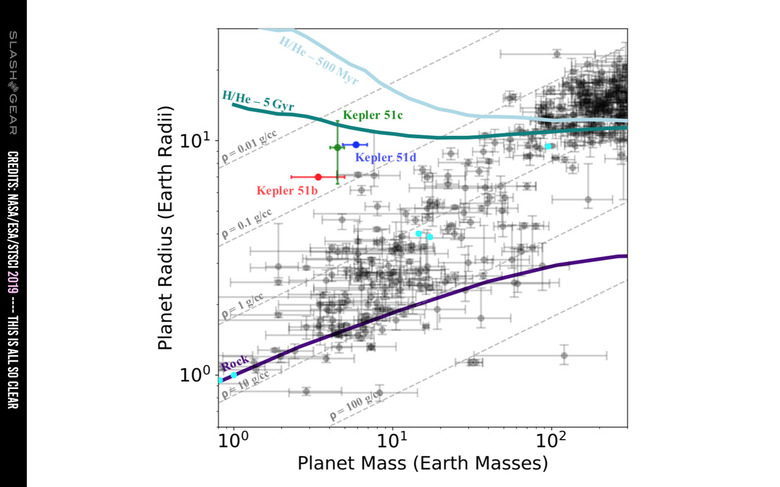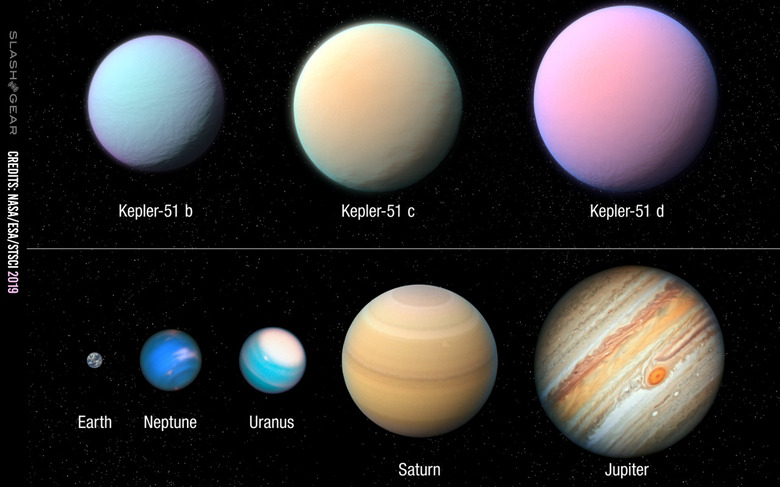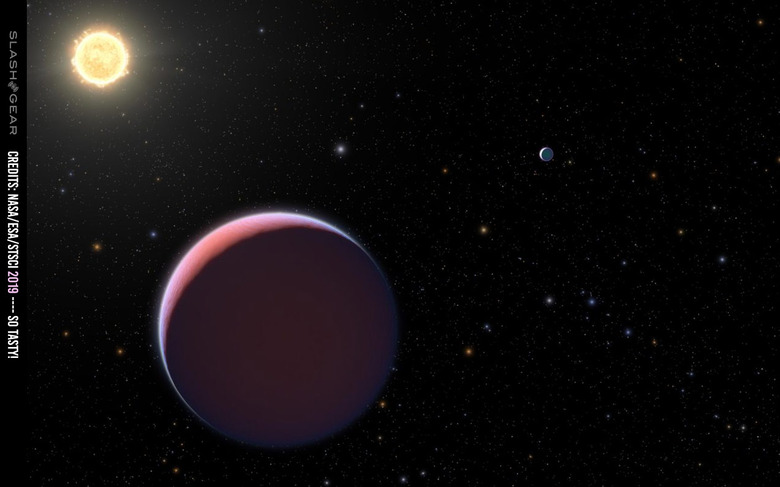Cotton Candy Super-Puff Worlds Found In Kepler 51 Star System
Fluff surrounds the solid interiors of each of the three planets in the Kepler 51 star system. Each of these planets was discovered to have masses "only a few times larger than Earth's" with radii larger than Neptune. Because of these extreme variables, all three studied Kepler 51 planets are now part of a relatively new class of planets called super-puffs!
To find this information, researchers recorded two transits each of planets Kepler 51b and 51d with the Wide Field Camera 3 (WFC3) on the Hubble Space Telescope. They used this information (transit times), newly updated stellar parameters, and newly re-analyzed Kepler data, they found some extremely low densities for each of three massive planets. Results showed that all three studied planets in the Kepler 51 star system have densities lower than 0.1 g/cm^3.

The planets are called Kepler 51b, 51c, and 51d. These "Jupiter-sized planets" have orbital periods around Kepler 51 of 45, 85, and 130 days. Because of the relatively faint light of the nearby sun (also quite young, at just 500 Myr old), "currently available instruments" and the Doppler technique made it difficult to determine the mass of each planet. Because of this, Kepler light curves were used.
With data analyzed and reported in Steffen et al. (2013) and later analyzed by Masuda (2014), the masses of these incredibly light planets were determined. Per the data reported in 2013, then confirmed in 2014, now explored at greater depth in the paper cited below (2019), it was determined that these three Kepler 51 planets aren't just low-density, they're the lowest density planets on record!

NOTE: The images you see of the Kepler 51 planets here come from CU Boulder Today. "Top: An artist's depiction of the Kepler 51 star system; bottom: Kepler 51's three planets compared to the size of planets from our solar system. (Credits: NASA/ESA/STScI)"
Sadly, the planets aren't necessarily colored like cotton candy. Because they're so far away, current tools are unable to detect their color. As such, they COULD be brightly colored – so we might as well imagine the colors that delight the most!
"Kepler 51 planets are the lowest-density planets to date according to the NASA Exoplanet Archive." You can see the latest data available in the CalTech webpage for the NASA Exoplanet Archive right this minute!
NOTE: This is not the first set of examples of "super-puff" planets! A description is given in a 2016 paper by Eve J. Lee and Eugene Chiang: SUPER-PUFF: "an uncommon class of short-period planets seemingly too voluminous for their small masses."
The 2016 paper is titled "Breeding Super-Earths and Birthing Super-Puffs in Transitional Disks" and can be found with code DOI:10.3847/0004-637X/817/2/90 authored by Eve J. Lee and Eugene Chiang. Research was published in The Astrophysical Journal, Volume 817, Number 2, January 22, 2016.

For more information on the Kepler 51 super-puffs, see The Featureless Transmission Spectra of Two Super-Puff Planets as authored by Jessica E. Libby-Roberts, Zachory K. Berta-Thompson, Jean-Michel Desert, Kento Masuda, Caroline V. Morley, Eric D. Lopez, Katherine M. Deck, Daniel Fabrycky, Jonathan J. Fortney, Michael R. Line, Roberto Sanchis-Ojeda, and Joshua N. Winn. You can find that paper via code arXiv:1910.12988 [astro-ph.EP], as submitted [v1] by Jessica Libby-Roberts on Mon, 28 Oct 2019 22:13:39 UTC.
